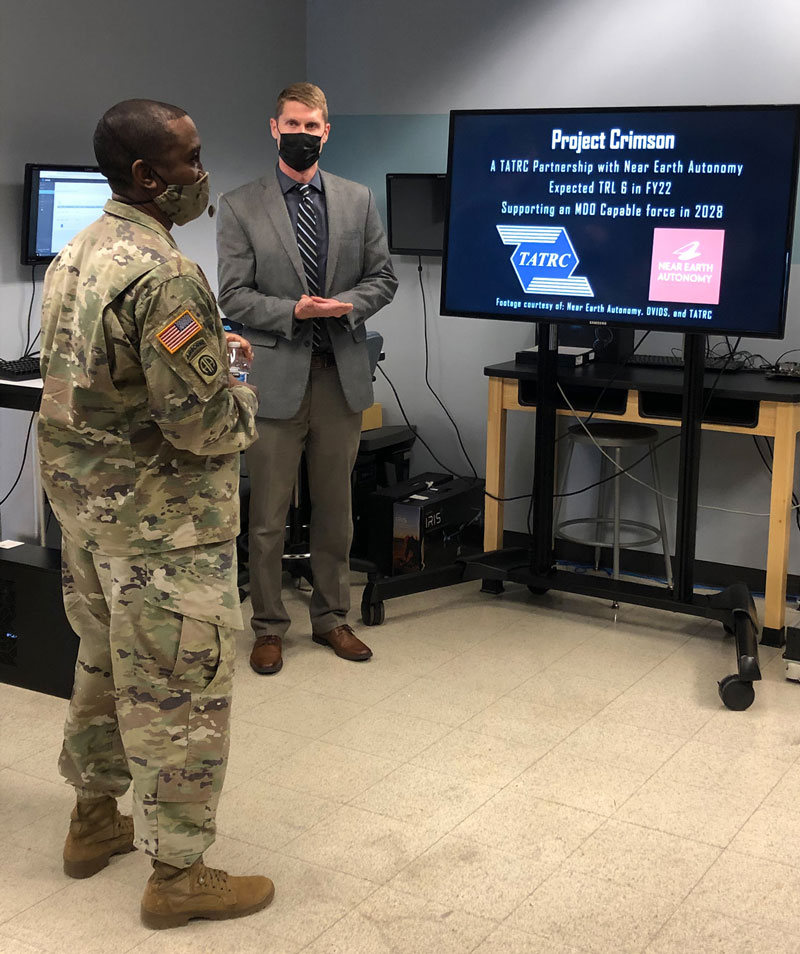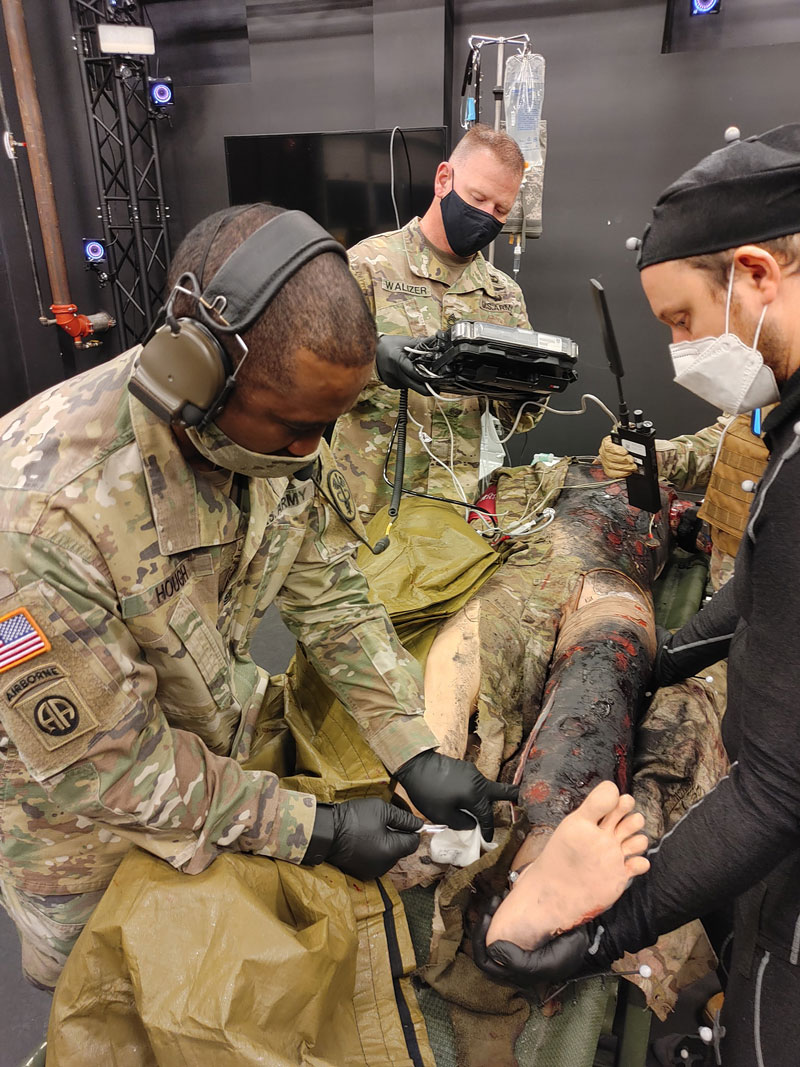MEDCOM CSM Hough Hones his Simulation Skills at TATRC
December 31, 2020 | Download PDF
 Mr. Nate Fisher, MedRAS Division Chief, was on-hand to brief CSM Hough on current TATRC initiatives.
Mr. Nate Fisher, MedRAS Division Chief, was on-hand to brief CSM Hough on current TATRC initiatives. On 24 November, TATRC was privileged to host Command Sergeant Major Diamond Hough, of the U.S. Army Medical Command (MEDCOM), as well as our own CSM, Victor Laragione, for a briefing on current initiatives and a tour of our Simulation facility.
As the senior NCO for Army Medicine working for MEDCOM Commanding General, LTG R. Scott Dingle, it was an honor to host CSM Hough and demonstrate firsthand all the important work that TATRC is doing. An introductory briefing with our Leadership team was followed up by a tour of our Medical Robotics and Autonomous Systems (MedRAS) lab area and brand new, state of the art simulation based research environment, known as the ‘NEXUS.’ It was in the ‘NEXUS’ that CSM Hough was able to roll up his sleeves and experience how our Medical Modeling, Simulation, Informatics and Visualization (MMSIV) team is using first class simulation technologies that include high-fidelity mannequins, motion capture cameras, and moulage, to better understand the performance relationship of medical providers, medical technology, and medical data to improve combat casualty care and military medicine. We were impressed with CSM Hough’s “surgical skills” as he simulated an escharotomy during the hands on scenario and demo.
A big shout out to our MMSIV & MedRAS teams, as well as our two medics who were on hand to assist for the demonstration, 1SG Walizer and SPC Sa-Id.
 During the visit, CSM Hough impressed all with his surgical skills during a simulated escharotomy.
During the visit, CSM Hough impressed all with his surgical skills during a simulated escharotomy.Our thanks to CSM Hough from the Office of the Surgeon General for his time and interest in TATRC’s expanding simulation capabilities.
This article was published in the March 2021 issue of the TATRC Times.